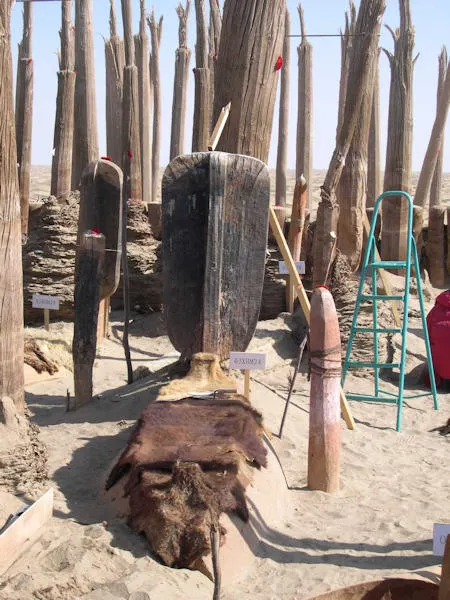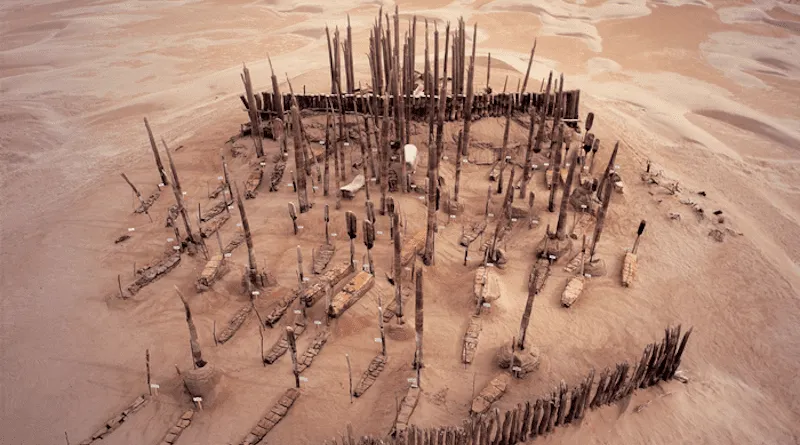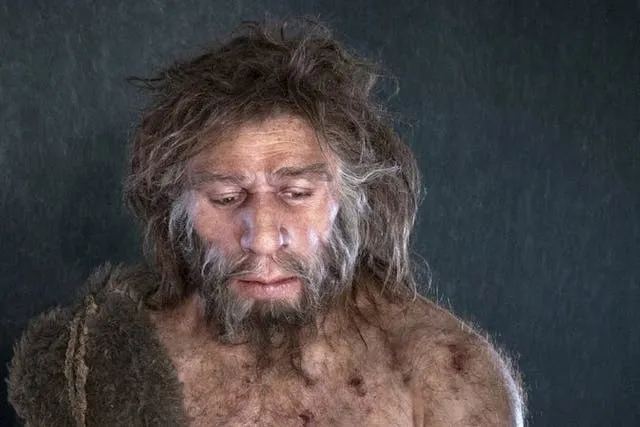Echoes from the Desert: The Enigmatic Tarim Basin Mummies and Their Astonishing Origins

Introduction: A Desert Mystery Unearthed
In the arid sands of the Tarim Basin, located in present-day Xinjiang, western China, archaeologists unearthed something completely unexpected—mummified bodies with European features, remarkably well-preserved despite being over 3,000 to 4,000 years old. These are known as the Tarim Basin mummies, and their discovery has challenged long-held beliefs about ancient migration, trade, and cultural diffusion in prehistoric Central Asia.
1. Discovery in the Sands
The first major discoveries came in the early 20th century, when European explorers like Sven Hedin and Aurel Stein reported findings of ancient textiles and skeletal remains along the Silk Road. However, it wasn’t until Chinese archaeologists in the 1980s and 1990s excavated tombs in places like Qäwrighul, Cherchen (Qiemo), and Loulan, that the astonishingly preserved mummies drew global attention.
These bodies—men, women, and children—had blond or red hair, tall statures, long noses, and deep-set eyes. Some were even dressed in colorful woolen garments resembling Celtic or Bronze Age European attire.
2. Who Were They? DNA Says…
Initial speculation suggested the Tarim mummies were Indo-European migrants, perhaps of Tocharian or Caucasoid descent, arriving via the Eurasian Steppe. But this was only part of the story.
A groundbreaking DNA analysis published in 2021 by scientists from China and international partners revealed that:
- The oldest mummies (dating to around 2000 BCE) were not recent migrants.
- Instead, they were direct descendants of an ancient Ice Age Siberian population, known as the Ancient North Eurasians (ANE)—a lineage nearly extinct today.
- These people mixed very little, if at all, with neighboring agricultural societies or incoming Indo-Europeans in the early stages of their civilization.
This surprised scientists, as it indicated the mummies were indigenous to the Tarim Basin, not outsiders as previously assumed.

3. Cultural Life and Preservation
Despite living in one of the harshest desert environments on Earth, these people thrived:
- Diet: Their stomach contents show a diet of millet, barley, dairy, and meat.
- Clothing: Made of wool and felt, often dyed and patterned, suggesting advanced textile knowledge.
- Burial practices: They were buried with coffins shaped like boats, felt hats, woven baskets, and sometimes wooden poles, possibly symbolizing afterlife journeys.
The extreme dryness and salty soil of the desert naturally mummified the bodies, preserving hair, skin, and clothing in stunning condition.
4. The Tocharians and Later Indo-European Influence
Centuries after the earliest mummies, a separate wave of people arrived in the Tarim Basin. These later groups—possibly related to the Tocharians, an Indo-European-speaking people—left behind:
- Documents in Tocharian script (an extinct Indo-European language)
- Buddhist temples and urban settlements along the Silk Road
The Tocharians are often confused with the original Tarim mummies, but DNA evidence now distinguishes the two. The original inhabitants were not Indo-European, though they may have influenced or later been absorbed by incoming cultures.
5. Politics and Controversy
The Tarim Basin mummies have not only sparked scientific debate but also political controversy:
- Their European-like features led to sensitive questions about ethnic origins in modern Xinjiang, a region home to the Uyghur minority.
- The Chinese government has at times restricted access to the mummies and research publications, likely due to concerns about separatism or rewriting historical narratives.
Nevertheless, international collaboration has led to significant advances in understanding their origins.
6. Legacy and Significance
The Tarim Basin mummies remind us that ancient human migration and adaptation were far more complex than once believed. Their existence challenges linear ideas of East vs. West and highlights the rich diversity of early civilizations in Central Asia.
Key takeaways:
- They represent a long-isolated ancient Siberian lineage surviving in the desert.
- Their culture blended nomadic survival skills with advanced textile and burial traditions.
- They provide crucial insight into Bronze Age human genetics, trade routes, and early societal development.

Conclusion: The Desert Keeps Its Secrets
The Tarim Basin mummies are more than just preserved bodies—they are a bridge between distant peoples, a time capsule of ancient life, and a puzzle still being pieced together. As science advances, these “ghosts of the desert” continue to reshape what we know about humanity’s far-reaching past.




